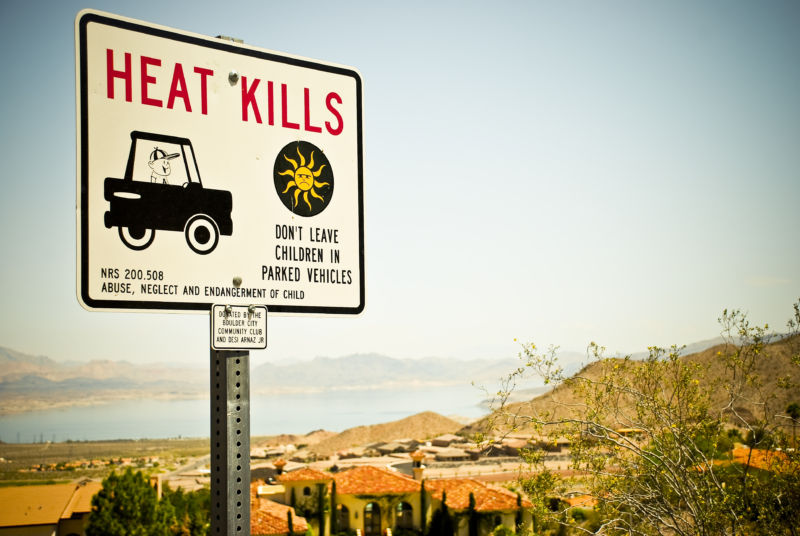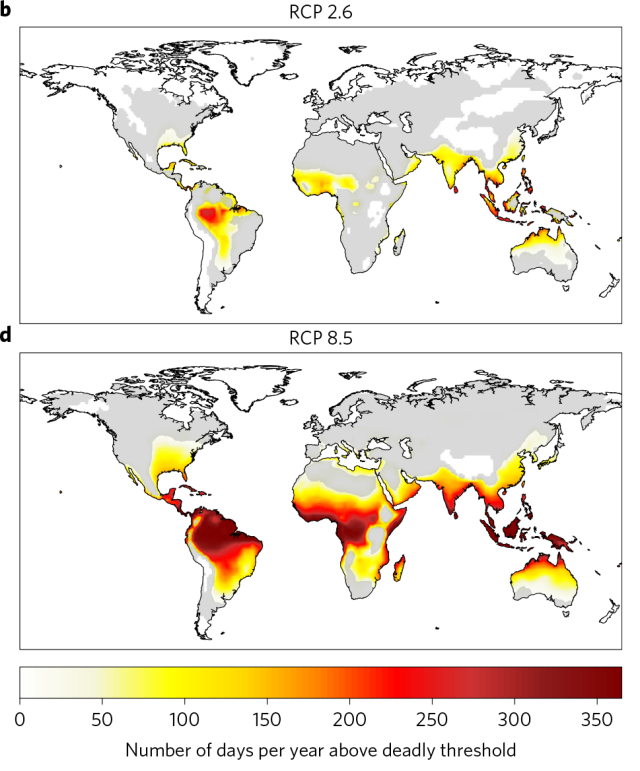
‘Tis the season for heatwaves in the Northern Hemisphere, as folks across Europe and parts of the US west have been reminded this week. In addition to providing weather to complain about—seemingly a necessary component of human communication—heatwaves can be straight up deadly. The 2010 Moscow heatwave (combined with thick air pollution from associated wildfires) caused thousands of deaths.
The stress of extreme heat on the human body is real. While most of us don’t see those conditions too often, they do occur today. And that means that our warming climate will ensure they occur more often. But how often will that be?
Evaluating this risk with precision isn’t easy, because global data on deaths attributable to heatwaves aren’t very good. But a group of researchers led by the University of Hawaiʻi at Mānoa’s Camilo Mora gave it a shot, gathering together over 900 studies that covered 784 heatwaves in 36 countries.
Killer heat
The first step was to analyze the weather conditions in each case to identify the point where health impacts get serious. To do this, they compared weather variables during those heatwaves to a number of randomly selected times where the same locations were free of heat-related fatalities. That allowed them to define danger thresholds based on temperature and relative humidity.
Your body loses the ability to shed heat to your surroundings once those surroundings get close to body temperature—roughly 98°F or 37°C. Humidity has a lot to do with it, because your ability to cool off by sweating depends on the ability of your sweat to evaporate. At high humidity, sweating becomes much less effective, allowing you to overheat even if air temperature is a bit below body temperature.
The researchers then looked for how often these thresholds are crossed around the world. In the year 2000, as an example, about 13 percent of Earth’s land area—and 30 percent of its human population—experienced 20 days or more of weather above the danger line. That mostly occurred in the tropics, including India and Southeast Asia.
They then applied the same analysis to projections of global warming for several scenarios of greenhouse gas emissions. By 2100, rising temperatures mean we can only choose between “more of this” and “a lot more of this.” The best-case, most-aggressive-emissions-cutting scenario limits warming to just below 2°C above pre-industrial times. Even there, we would expect the share of the population experiencing dangerous heat to rise from 30 percent to 48 percent.
An ugly future
And in a scenario where emissions continued to climb unabated, almost half the Earth’s land area and three-quarters of its population would cross the danger line for 20 days or more each year. While the tropics will generally warm less than higher-latitude regions, they’re also closer to the heat threshold—and for a great portion of the year. Areas in the humid tropics would cross that line almost every day. In this scenario, A huge area of the globe, from 40 degrees north or south latitude would cross the threshold for about 60 days in a year. That would include all of Africa and Australia, and anything in the US south of New York City. (To see for yourself, take a look at this interactive map showing the study’s results.)

This is another example of the fact that raising Earth’s average temperature by a few degrees Celsius (over 4°C in the case of that high emissions scenario) is significant and dangerous, even if it doesn’t sound like much to you.
These hot conditions might be even more troubling in the light of other trends: urbanization and population growth in the tropics, and the growing older segment of the population, which is at higher risk. The researchers conclude, “Our paper emphasizes the importance of aggressive mitigation to minimize exposure to deadly climates and highlights areas of the planet where adaptation will be most needed.”
Nature Climate Change, 2017. DOI: 10.1038/NCLIMATE3322 (About DOIs).
reader comments
156